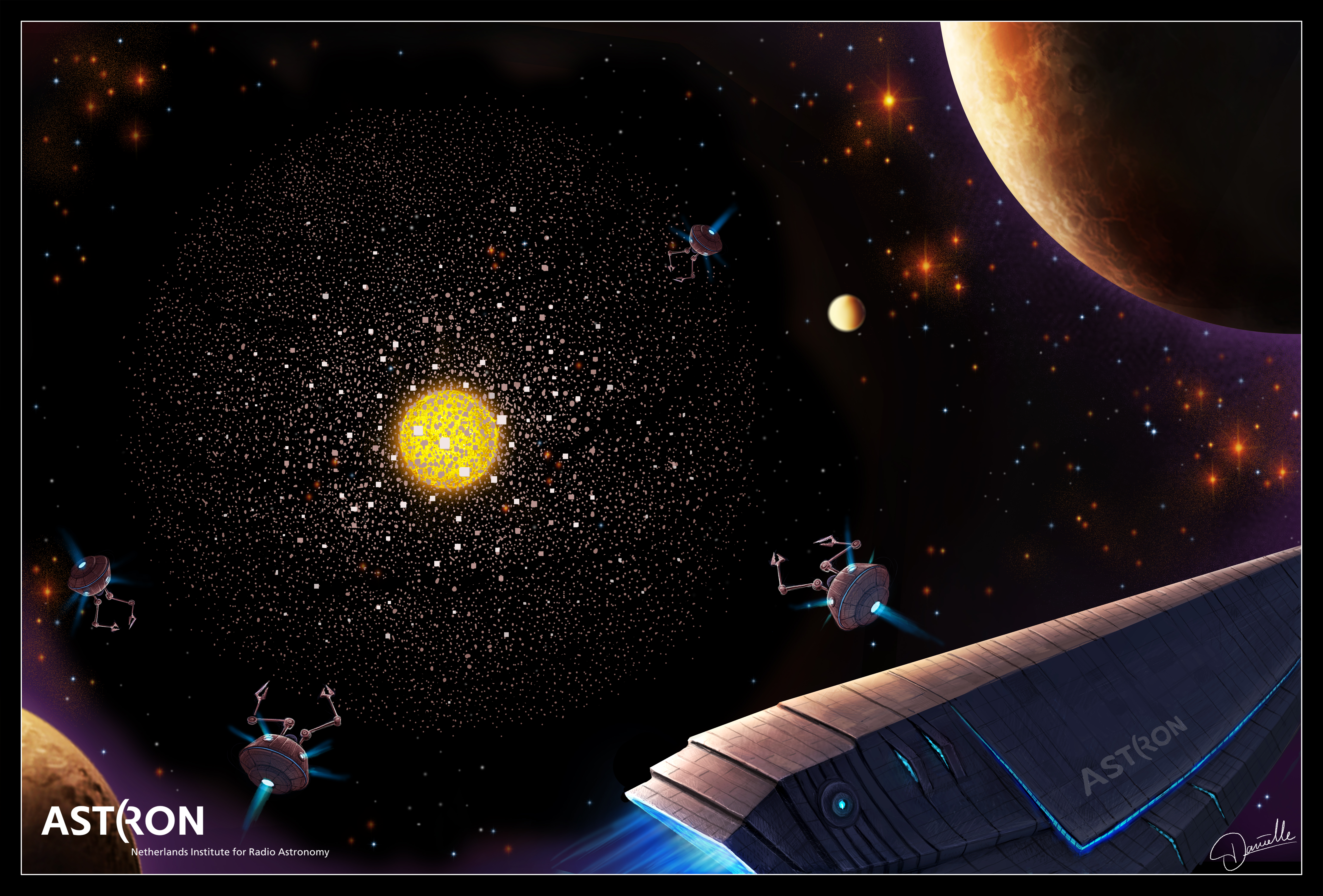Are We Alone? Survey Finds No Sign of Advanced Alien Civilizations

Nearby galaxies in our universe show no signs of advanced alien civilizations — at least for now.
A new study that examined the most promising galaxies we can see out of a collection of 100,000 found no signs of the waste energy that such alien civilizations might generate, showing that they're extremely rare, if not nonexistent. The galaxies were chosen because they emit a large amount of heat, but rather than being the byproduct of alien factories the emissions seem to come from less exotic, natural causes such as buildups of dust.
"Some of these systems definitely demand further investigation, but those already studied in detail turn out to have a natural astrophysical explanation," study author Michael Garrett said in a statement. Garrett is a professor at the University of Leiden and the general and scientific director of ASTRON, the Netherlands Institute for Radio Astronomy. [13 Ways to Find Intelligent Alien Life]
"It's very likely that the remaining systems also fall into this category — but, of course, it's worth checking out, just in case," he said.
Alien energy signs
In 1964, Russian astrophysicist Nikolai Kardashev defined three levels of civilization based on their ability to harness the energy available to them. Since that time, the Kardashev scale has been expanded to include four more levels. Earth's civilization lies very low on the scale, at about a Type 0.7, because of its ability to harness only a portion of the energy of its planet.
Earlier this year, a team of astronomers led by Jason Wright, of Pennsylvania State University, studied 100,000 galaxies that NASA's Wide-field Infrared Survey Explorer (WISE) spacecraft could best observe, searching for signs of a Type III civilization capable of harnessing the energy of an entire galaxy. Such a civilization would have to be extremely advanced, capable of colonizing multiple stars within a galaxy and using the energy of all of them. Following the laws of thermodynamics, energy harnessed from this kind of technology could not be destroyed but should be radiated away in infrared wavelengths, similar to the way a computer radiates heat.
Wright's team identified 93 sources exhibiting both extreme mid-infrared emission and colors. Garrett investigated those that had been well studied in the past, in an attempt to determine possible sources of the excessive radiation. He found that the majority of the systems created emission that could be best explained by natural astrophysical processes, such as dust generated and heated by massive star formation. He concluded that advanced civilizations capable of harnessing the power of their galaxies are scarce or nonexistent.
Breaking space news, the latest updates on rocket launches, skywatching events and more!
"The original research at Penn State has already told us that such systems are very rare, but the new analysis suggests that this is probably an understatement, and that advanced Kardashev Type III civilizations basically don't exist in the local universe," Garrett said in the statement.
"In my view, it means we can all sleep safely in our beds tonight — an alien invasion doesn't seem at all likely!"
The search goes on
Garrett's technique could also help to identify less advanced Kardashev Type II civilizations, which might harness the energy output of a single star. He now plans to search for these civilizations, which may be more common than their Type III counterparts.
"It's a bit worrying that Type III civilizations don't seem to exist," Garrett said. "It's not what we would predict from the physical laws that explain so well the rest of the physical universe."
He suggested that such civilizations could be far more energy efficient, producing very little waste heat, beyond scientists' current understanding of physics.
"What's important is to keep on searching for the signatures of extraterrestrial intelligence until we fully understand just what is going on," Garrett said.
The research was detailed Sept. 15 in the journal Astronomy & Astrophysics.
Follow Nola Taylor Redd on Twitter @NolaTRedd or Google+. Follow us @Spacedotcom, Facebook or Google+. Originally published on Space.com.
Join our Space Forums to keep talking space on the latest missions, night sky and more! And if you have a news tip, correction or comment, let us know at: community@space.com.

Nola Taylor Tillman is a contributing writer for Space.com. She loves all things space and astronomy-related, and always wants to learn more. She has a Bachelor's degree in English and Astrophysics from Agnes Scott College and served as an intern at Sky & Telescope magazine. She loves to speak to groups on astronomy-related subjects. She lives with her husband in Atlanta, Georgia. Follow her on Bluesky at @astrowriter.social.bluesky
![By surrounding their star with swarms of energy-collecting satellites, advanced civilizations could create Dyson spheres. [Read the Full Dyson Sphere Infographic Here.]](https://cdn.mos.cms.futurecdn.net/5qHjgqnSB7CUWUxHRBCLeB.jpg)
